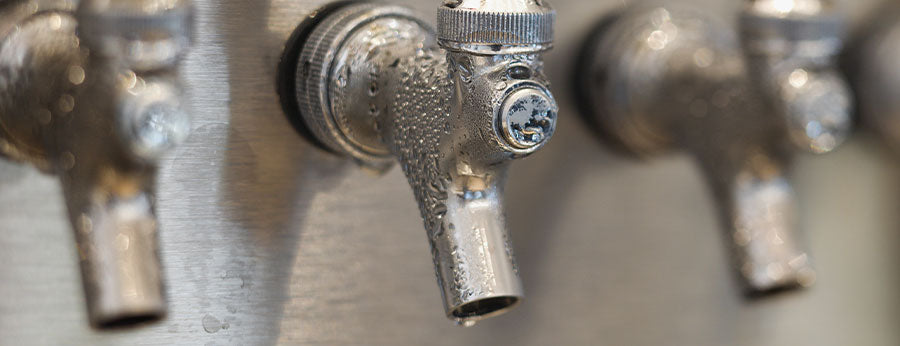October 01, 2020
How to Keg Beer

Northern Brewer offers a complete line of kegging equipment: new kegs, used kegs, beer faucets, shanks, taps, tubing, regulators, distributors and all manner of small parts to create the draft system of your dreams. Commercial keg couplers and draft towers are also available if homebrew isn't your thing, or in case you need the occasional supplement!
How to Keg Beer
Step 1: Sanitize or clean your keg.
You sanitize a keg when you want to fill it with beer to carbonate and drink. You clean an empty keg when the carbonated beer has already been drunk. For either sanitizing or cleaning you need to: disassemble the keg, soak the small parts, and fill the shell.
To do this:
- Vent the pressure in the keg by lifting the lid relief valve. Then, remove the lid. Use a socket wrench and a deep driver socket to remove the liquid and gas posts from the keg. (out = liquid, gas = in). Remove gas dip tube. Soak these small parts in a cleaning or sanitizing solution.
- Remove the long liquid-side dip tube and place it inside the keg shell. Fill the shell with a solution of easy clean or your sanitizer or cleanser of choice.
- Soak time for sanitizing: 2+ minutes. Soak time for cleaning: 30min to 1hr, depending. The dirtier the keg, the longer you should soak it. Air dry all parts when done soaking.
- Follow steps in reverse to re-assemble your keg.
Step 2: Assemble and leak test the gas side of the keg system.
- Attach the CO2 Regulator to the gas cylinder and tighten.
- Tighten the gas line and disconnect to the regulator body. Make sure all valves are closed
- Sponge a bit of soapy water on all connections: the regulator and cylinder, the gas line and regulator, and the gas line and the disconnect. Open all valves. If you have a gas leak, you will see bubbles and you need to tighten the connection with the leak.
Step 3: Transfer beer to sanitized keg.
- Siphon beer from fermentor into keg
- Seal the keg with the lid
- Connect CO2 supply to the keg by attaching the disconnect to the gas "in" post on the keg. You will hear a hiss sound as the keg is pressurize.
- Force carbonate the beer by pressurizing the keg with CO2 gas.
- Adjust the carbonating pressure to force carbonate the beer in the keg. Use the set screw on the regulator. The gauge opposite the gas line shows the pressure being supplied to the keg. Recommended: 20 PSI for force carbonation (may vary depending on style, etc.)
Step 4: After 2-3 days, test the carbonation of the beer.
- Shut off the CO2 at the regulator
- Vent the CO2 from the head space in the keg by opening the lid relief valve and use the set screw to lower the PSI from force carbonating to dispensing levels. Recommended: 10-12 PSI for dispensing levels.
- Re-open the red shut-off valve on the regulator. You'll probably need to use the set screw to adjust the pressure back to 10-12 PSI
- Attach liquid line to liquid out-post on the keg. Make sure the faucet is shut.
Step 5: Enjoy your beer!
- If your beer is still a bit flat, remove the liquid line and return your PSI back to force carbonation levels. Test the beer again in a day or two.
Instructional Video:
Additional Kegging Resources:
- Kegging Carbonation Chart PDF
- Please refer to our Kegging Overview document (PDF) for further details about the kegging process.
- You can also watch our full lineup of Kegging and Bottling Videos.
- Read our article on Ball Lock Kegs vs Pin Lock Kegs.
Begin or continue your homebrew education with Northern Brewer University and our Homebrew Video Courses.
